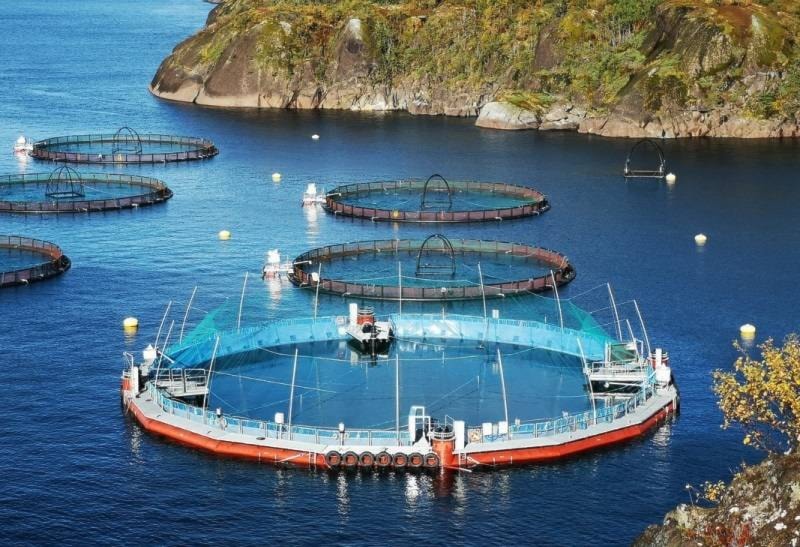A major B.C. salmon-farm operator will soon be testing a new containment system designed to prevent sea lice and algae from entering pens and hopefully reduce the chances of fish escapement.
Cermaq Canada is assembling the structure, known as a semi-closed containment system (SCCS), in Port Alberni and plans to stock it with Atlantic salmon later this fall for trials at its Millar Channel farm in Clayquot Sound.
“We are just finishing our second trial producing one-kilogram salmon in a semi-closed cage in Norway, similar to the one being deployed in Canada, and we are very excited by the results,” said David Kiemele, managing director for Cermaq Canada.
“During both trials, a control system was anchored adjacent to the new SCCS. The fish within the SCCS showed consistently better growth, overall improved performance and almost no occurrence of sea lice...”
Canadian Maritime Engineering will oversee and manage the assembly of the system in B.C.
Open-net salmon farms have long been the focus of controversy for their potential impact on wild salmon, either through escapement or the spread of sea lice that can be lethal to fish.
Cermaq’s containment system is fitted with a polymer lining that wraps around the net-pen like a bag, isolating the farmed fish from the natural environment and wild stocks, Cermaq says. Four intakes draw seawater into the pen from depths below the upper-water column where sea lice and some harmful algae are commonly found. Water will exit the bag through deep-level ports.
READ MORE: Federal fund offers relief to B.C. seafood processors
“The bag remains pressurized through continuous and positive water flow,” Kiemele said. “This will essentially eliminate lateral contact between wild and farmed salmon, which has benefits to both populations.”
The lining can withstand damage from storms and predators, according to Cermaq, and if a breach does occur the interior net will prevent salmon escapement.
The system can be customized to specific sites, based on depth, dissolved oxygen levels and water temperatures.
B.C. trials of the containment system preceed a federal government mandate to transition salmon farms from open-net opperations. Prime Minister Justin Trudeau gave the fisheries minister a 2025 deadline to develop a plan with industry and the Province of B.C.
Last week B.C.’s First Nations Leadership Council called for the immediate end to marine-based salmon farming in the province, following reports by fish farm owners that show 37 per cent of facilities, or 19 farms across the province, exceed government sea lice limits.
Opponents to open-net pens are pushing for a transition to land-based systems, but industry groups like the BC Salmon Farmers Association have resisted the option as it will require steep capital investments and additional operating costs, take up larger environmental footprints and produce an inferior quality of fish.
READ MORE: First Nations call for end to B.C. open-net salmon farms
Cermaq said its containment system may allow the company to farm in a predictable and stable manner while still retaining the benefits of ocean farming with less risk.
